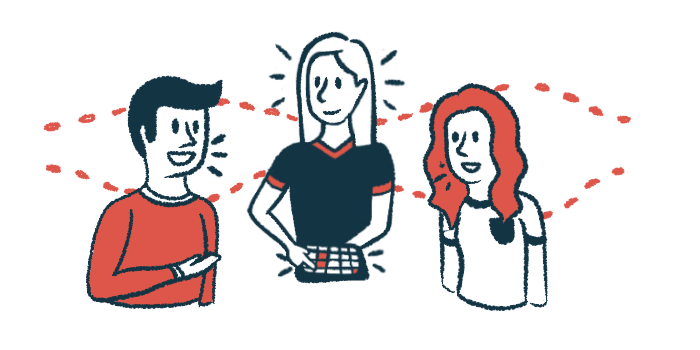Initiative to use AI technologies to improve communication in ALS
Scott-Morgan Foundation teaming up with tech companies on new project

The Scott-Morgan Foundation (SMF), a nonprofit that’s pioneering assistive technology innovation, will lead a new initiative using artificial intelligence (AI) technologies to help people with diseases like amyotrophic lateral sclerosis (ALS) to better communicate and maintain their sense of identity.
“We live in a world where millions are silenced by disability, including over 500 million people grappling with muscular or neurological conditions,” LaVonne Roberts, CEO of SMF USA, said in a foundation press release. “While there’s currently no cure for ALS, our technology offers hope for maintaining quality of life and self-expression. This urgency drives our innovation.”
ALS is a neurodegenerative condition that causes progressive muscle weakness. As the disease advances, patients often lose the ability to speak and make complex facial expressions.
Now, the SMF has launched what it calls “a groundbreaking AI-powered solution” using assistive technologies to aid people with ALS.
The project, unveiled at Lenovo Tech World ’24, is a collaboration between SMF and several tech companies, including Lenovo, as well as D-ID, Elevenlabs, and Irisbond. It aims to take a multifaceted approach to help patients express themselves in many ways, even when they no longer can with their own bodies.
“We’re not just imagining a world where even the most severely disabled individuals can fully express themselves — we’re building this revolutionary reality with the potential to impact lives on a massive scale,” Roberts said.
Project will offer a wide range of AI technologies to ALS patients
The project’s AI technologies will include computer-based avatars that allow patients to maintain their visual presence and facial expressions. Voice cloning will allow individuals with ALS to speak in their own voice through a computer.
Gil Perry, cofounder and CEO of D-ID, said “working with this collaboration perfectly fits our strategy of using AI to make the world better and more connected.”
“This powerful technology is so often used for business or entertainment — which of course we love to see and support — but promoting social good is where we see it make a life-changing impact,” Perry added.
To help users make themselves understood, the system will take advantage of large language models, or LLMs — a type of AI used to put together words in a way that closely resembles human speech. ChatGPT is a well-known example of a system based on LLM.
Users will have the option of using an LLM that’s based on public databases, or a model that’s specifically trained on their own writings, like emails and social media posts.
“This dual choice generative AI system enables user choice to determine which system they are most comfortable — public or private,” said Eric Kern, chief engineer of the SMF.
We’re not just giving people with severe disabilities a voice; we’re amplifying their dreams, creativity, and ability to shape the world. … This is the beginning of a new era where disability doesn’t define capability, and AI becomes a bridge to full societal participation.
The system will also include eye-tracking software to make it usable by individuals who aren’t physically capable of operating a typical computer.
Erin, a project participant who’s 24, living with ALS, and a botany graduate, says this new technology “isn’t just about maintaining my voice; it’s about expanding my future possibilities.”
“As someone who went from studying plants to advocating on social media, I know that ALS doesn’t define us – our dreams and determination do,” Erin said.
In addition to helping people affected by motor disorders like ALS, the SMF hopes these new technologies will embody the so-called curb-cut effect — a phenomenon in which adaptations designed for people with disabilities ultimately make life better for society as a whole. The idea is similar to sloped curbs on sidewalks, which were originally created for people in wheelchairs but now also aid others, like those pushing carts or strollers.
Roberts said the goal is “revolutionizing what it means to be human in a digital age.”
“We’re not just giving people with severe disabilities a voice; we’re amplifying their dreams, creativity, and ability to shape the world,” Roberts said. “This is the beginning of a new era where disability doesn’t define capability, and AI becomes a bridge to full societal participation.”







